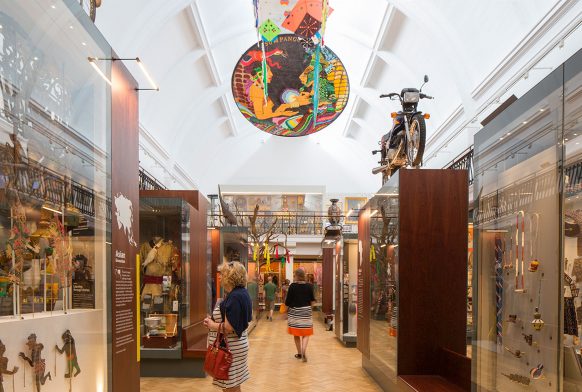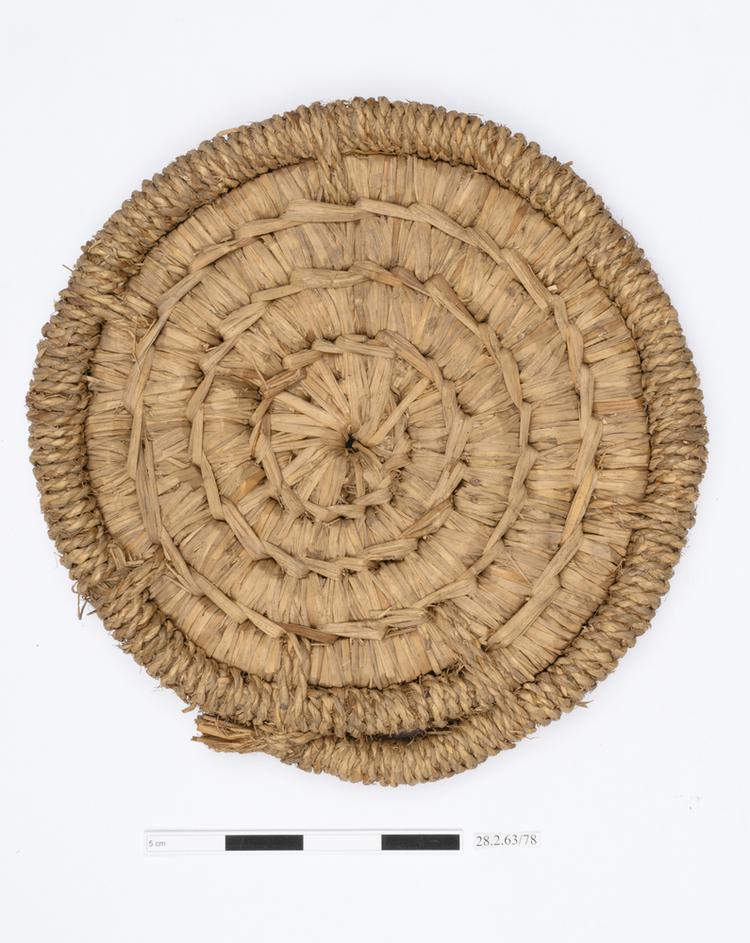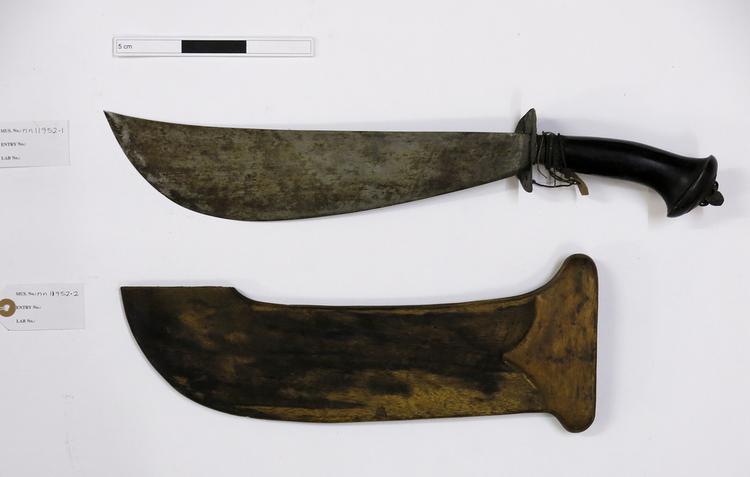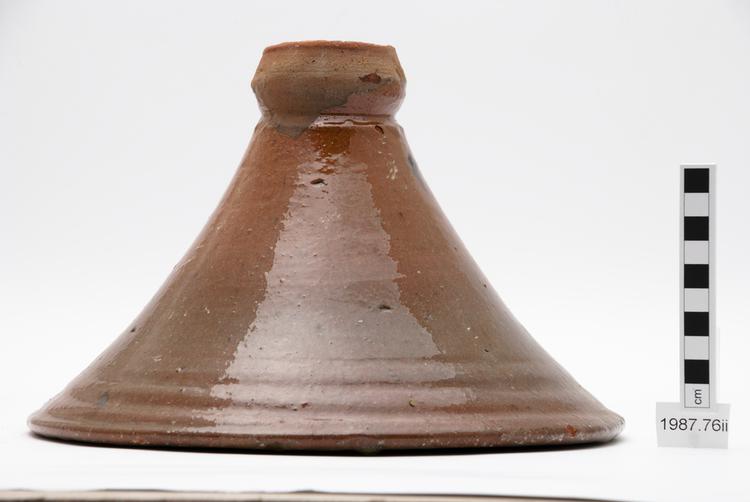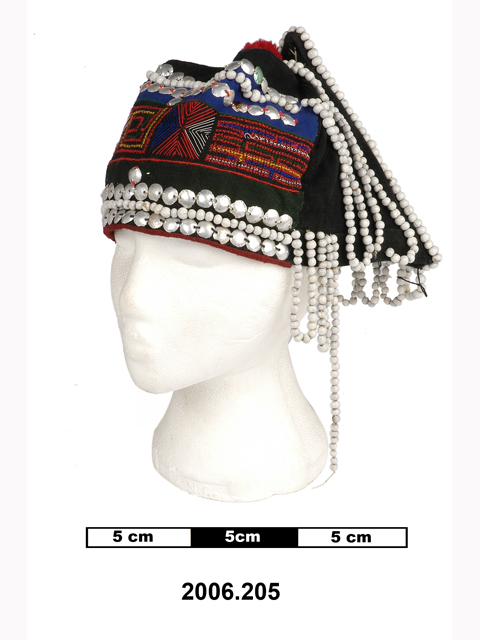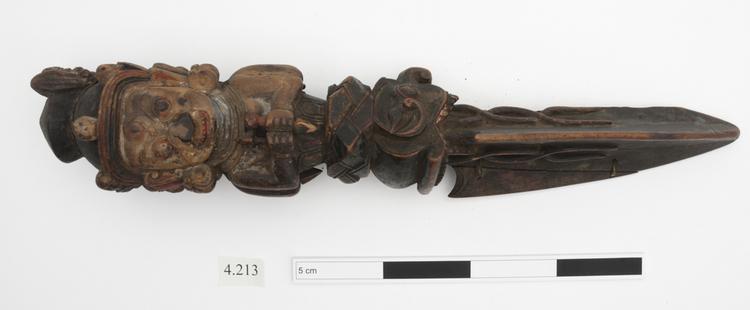






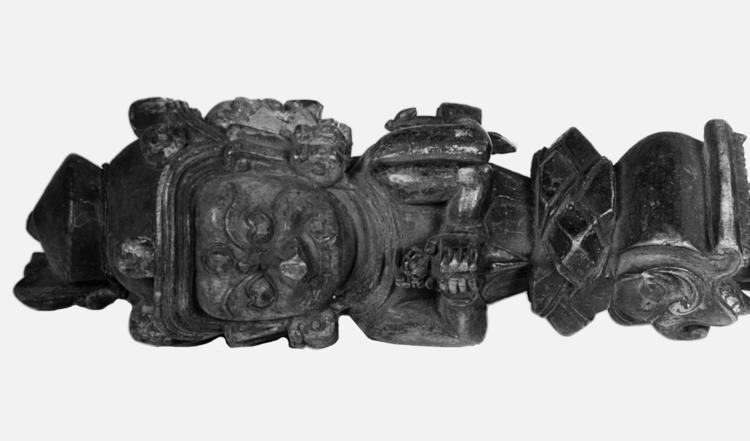
Wooden ritual dagger, phur ba, of painted carved wood. The pommel is made up of the busts of the three wrathful deities; Yamantaka, Amrita Kundalin and Hayagriva, picked out in white, blue and red respectively. The busts are girdled with lotus petals below which is a knot. The blade is hafted in the mouth of a makara from which issues pairs of naga-serpents, writhing along each of the recesses of the three blades. The edge of one blade is missing, whilst another blade has been repaired and is bound to the shaft with two sections of yarn.
Phur ba or ‘kila’ in Sanskrit have a long history of use in Buddhist, Vedic and shamanic practices. In the context of Tibetan Buddhism they are associated with a wrathful deity Vajraklaya. Their dagger / stake-like form indicates their efficacy as a ritual tool through which negativity and obstructions can be annihilated and demons pinned down. Phur ba are used in all manner of different rituals from the preparation of the ground on which a monastery is to be built to exorcising demons from an individual’s body. In esoteric Vajrayana practice a phur ba can be used to pin down and bind negative energy thus purifying a practioner’s mindstream and aiding progress on the path to enlightenment. As it is wooden this example may have been made in the Chumbi Valley. A Chumbi origin is also made more likely if this phur ba was collected on the Younghusband Campaign (1903-1904) as the route the invading army took was through the Chumbi Valley. The accession date of 1904 makes a Younghusband provenance likely.
fighting



